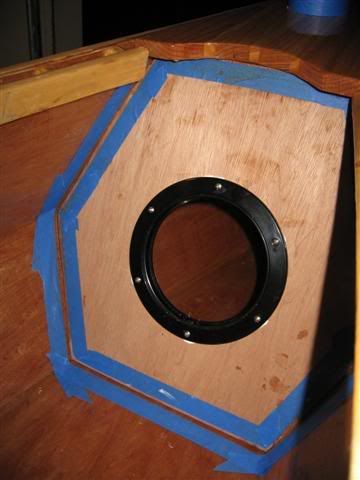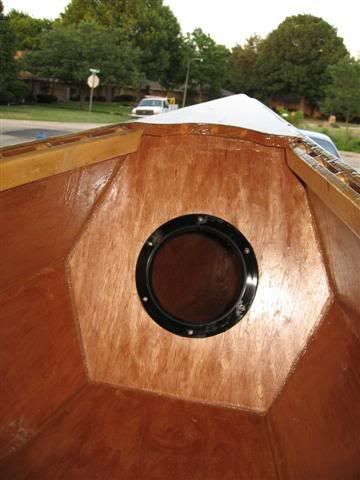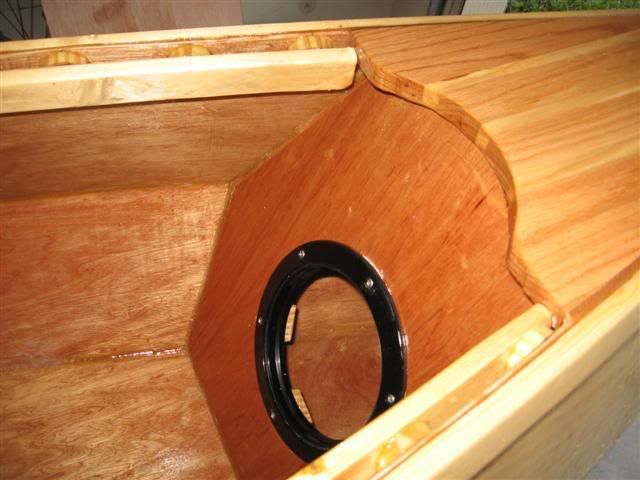Now you know the other half of the story.
JT's Iroquois
-
Kayak Jack
- Design Reviewer
- Posts: 1186
- Joined: Sun Jun 20, 2004 8:03 pm
- Type of boat I like: <-- Please read instructions to the left and delete this text. Then, tell us what type boat you like! :-)
- Location: South-central Michigan
As I said, others may differ. What I forgot to add is that - if they do differ from my opinions, they are wrong. 
Now you know the other half of the story.
Now you know the other half of the story.
Kayak Jack
Doing what you like is FREEDOM
Liking what you do is HAPPINESS
I spent most of my money on whiskey and women - and I'm afraid I just wasted the rest.
Doing what you like is FREEDOM
Liking what you do is HAPPINESS
I spent most of my money on whiskey and women - and I'm afraid I just wasted the rest.
-
Oldsparkey
- Design Reviewer
- Posts: 1272
- Joined: Sat Jun 19, 2004 11:08 am
- Type of boat I like: Wood boats .
- Location: Somewhere around Central Florida
- Contact:
As we use to say in the service there is the right way and then the service way , now we have changed it to Jacks way and the correct way. Now at times he does get it right but as they say , Even a blind Goose will find some corn.....Then we have to agree with him ..Kayak Jack wrote:As I said, others may differ. What I forgot to add is that - if they do differ from my opinions, they are wrong.
Now you know the other half of the story.
Chuck.
Remember:
Amateurs built the Ark...... Professionals built the Titanic
Visit some fine paddlers at The Southern Paddler
Amateurs built the Ark...... Professionals built the Titanic
Visit some fine paddlers at The Southern Paddler
-
Teddy Madison
- Posts: 79
- Joined: Thu Apr 24, 2008 4:36 pm
- Type of boat I like: <-- Please read instructions to the left and delete this text. Then, tell us what type boat you like! :-)
- Location: Rhode Island, United States
did some digging:
As it turns out, if you increase the temperature in a sealed container by 100 Celsius, you increase the pressure by 5lbs per square inch. So, if you started at 0C and went to 100C (32F - 212F) , you would have an internal pressure of 20lbs per square inch.
This would be an extreme in the case of a boat I would think.
My personal thought is that the wood has trapped air in it so no matter what you do you are going to get expansion and contraction due to temp changes contributing to epoxy cracks. I don't think there is a concern with oil canning or hatch lock from pressure.
Now if you don't mind, I need to consume more beer, the above was way to technical for a Saturday night. (Shoulda started with Rum Cokes).
As it turns out, if you increase the temperature in a sealed container by 100 Celsius, you increase the pressure by 5lbs per square inch. So, if you started at 0C and went to 100C (32F - 212F) , you would have an internal pressure of 20lbs per square inch.
This would be an extreme in the case of a boat I would think.
My personal thought is that the wood has trapped air in it so no matter what you do you are going to get expansion and contraction due to temp changes contributing to epoxy cracks. I don't think there is a concern with oil canning or hatch lock from pressure.
Now if you don't mind, I need to consume more beer, the above was way to technical for a Saturday night. (Shoulda started with Rum Cokes).
Wayne
-------------
Free Laker - In Progress!!!
-------------
Free Laker - In Progress!!!
-
jt
- Posts: 46
- Joined: Wed Dec 19, 2007 9:52 pm
- Type of boat I like: <-- Please read instructions to the left and delete this text. Then, tell us what type boat you like! :-)
- Location: Denton, TX
Working on bulkheads and hatches (one on each end). Tried to keep the fillet clean with taped edges...

A couple of coats of epoxy later...

I installed them on an angle to go from the inside of the deck and to cover up a fiberglass seam on the floor... (and I like the way the angled bulkhead looks!). It was a little tricky to get them sized right for the fit this way--after a couple of measurements, several cuts on a cardboard pattern worked pretty well, though.

I do think they might have added significant weight--I think it's noticeably heavier than when I took the boat out last week. But, I haven't weighed it yet--and I don't know for sure how heavy it was without the bulkhead/hatches installed. I might just have to make something lighter in the solo variety next...
I'm really down to just a couple of coats of varnish for u/v protection...
I never really got the finish that I wanted with the epoxy--user error, I know, but a little frustrating. Still, my wife keeps reminding me that I notice more of the mistakes than any one else would (she's good that way), and after seeing the mud, etc. in the bottom of the boat after the maiden voyage--well, I guess I'm just not as worried as I once was about how nice the finish is...

A couple of coats of epoxy later...

I installed them on an angle to go from the inside of the deck and to cover up a fiberglass seam on the floor... (and I like the way the angled bulkhead looks!). It was a little tricky to get them sized right for the fit this way--after a couple of measurements, several cuts on a cardboard pattern worked pretty well, though.

I do think they might have added significant weight--I think it's noticeably heavier than when I took the boat out last week. But, I haven't weighed it yet--and I don't know for sure how heavy it was without the bulkhead/hatches installed. I might just have to make something lighter in the solo variety next...
I'm really down to just a couple of coats of varnish for u/v protection...
I never really got the finish that I wanted with the epoxy--user error, I know, but a little frustrating. Still, my wife keeps reminding me that I notice more of the mistakes than any one else would (she's good that way), and after seeing the mud, etc. in the bottom of the boat after the maiden voyage--well, I guess I'm just not as worried as I once was about how nice the finish is...
Jeremy
Live and learn...
Live and learn...
-
Kayak Jack
- Design Reviewer
- Posts: 1186
- Joined: Sun Jun 20, 2004 8:03 pm
- Type of boat I like: <-- Please read instructions to the left and delete this text. Then, tell us what type boat you like! :-)
- Location: South-central Michigan
Assume you get a pressure change of only one half PSI. The bugger here is the "si" in PSI. That's pounds times the number of square inches.
If your cargo compartment is, say 18" long by 12" high, you have a couple of hundred square inches along the sides of the compartment, and maybe 75-90 along the top.
Lets round it off to 250 square inches times that 1/2 pound of pressure per square inch. You now have 125 pounds of force working on your boat.
You may want to have a leaky hatch cover.
If your cargo compartment is, say 18" long by 12" high, you have a couple of hundred square inches along the sides of the compartment, and maybe 75-90 along the top.
Lets round it off to 250 square inches times that 1/2 pound of pressure per square inch. You now have 125 pounds of force working on your boat.
You may want to have a leaky hatch cover.
Kayak Jack
Doing what you like is FREEDOM
Liking what you do is HAPPINESS
I spent most of my money on whiskey and women - and I'm afraid I just wasted the rest.
Doing what you like is FREEDOM
Liking what you do is HAPPINESS
I spent most of my money on whiskey and women - and I'm afraid I just wasted the rest.
-
jem
- Site Admin
- Posts: 4916
- Joined: Fri Jun 18, 2004 8:14 pm
- Type of boat I like: Wooden
- Location: Greensboro, NC
- Contact:
A small, 1/16" hole at the very top of the bulkhead will relieve any pressure and won't be big enough to let much water in if you capsize and that part of the canoe is submerged. It'll also be hidden from view.
If you add that hole, drill a 1/4" hole first, file the hole with epoxy-woodflour mixture, let cure, then redrill with 1/16" bit. That will seal the grain.
If you add that hole, drill a 1/4" hole first, file the hole with epoxy-woodflour mixture, let cure, then redrill with 1/16" bit. That will seal the grain.
-Matt. Designer.
-
Teddy Madison
- Posts: 79
- Joined: Thu Apr 24, 2008 4:36 pm
- Type of boat I like: <-- Please read instructions to the left and delete this text. Then, tell us what type boat you like! :-)
- Location: Rhode Island, United States
I would have to say that this is probably your best bet. Air pressure is a complex thing. Just make sure you only put one hole, that will allow air to flow in or out as temperature changes but if it were to submerge, no water would enter the chamber (Same as pushing a glass under water invereted, if there is no other port for the chamber to equalize then the water cannot enter.jem wrote:A small, 1/16" hole at the very top of the bulkhead will relieve any pressure and won't be big enough to let much water in if you capsize and that part of the canoe is submerged. It'll also be hidden from view.
If you add that hole, drill a 1/4" hole first, file the hole with epoxy-woodflour mixture, let cure, then redrill with 1/16" bit. That will seal the grain.
Wayne
-------------
Free Laker - In Progress!!!
-------------
Free Laker - In Progress!!!
-
Oldsparkey
- Design Reviewer
- Posts: 1272
- Joined: Sat Jun 19, 2004 11:08 am
- Type of boat I like: Wood boats .
- Location: Somewhere around Central Florida
- Contact:
When transportatiing the boat why not just unscrew the cover ? The size of that hole will sureley let the deck area vent.
I have the ends of a couple of my boats sealed which are air and water tight... none of them have blown up , out , in or around , they just sit there and do nothing but seal then ends of the boat. If I was going to pack them on a jet then I would drill a small hole due to the loss of atmospheric pressure.
That's the nice thing about Florida , the highest point above sea level is only a few feet ...... 138 I think.
I did take the canoe to Arkansas and threw , up and down there mountains without any problems and back home after a river trip. The ends are still air and water tight and in good shape even if there were no rapids in that river.. .. it was all rapids and definetly down hill on that river.
.. it was all rapids and definetly down hill on that river. 
Chuck.
The canoe ( and the sealed ends) have baked in the Florida sun and been frozen in other states on paddling trips and is still as good as the day I made her at sea level. That is one of the beauties of wood.
I have the ends of a couple of my boats sealed which are air and water tight... none of them have blown up , out , in or around , they just sit there and do nothing but seal then ends of the boat. If I was going to pack them on a jet then I would drill a small hole due to the loss of atmospheric pressure.
That's the nice thing about Florida , the highest point above sea level is only a few feet ...... 138 I think.
I did take the canoe to Arkansas and threw , up and down there mountains without any problems and back home after a river trip. The ends are still air and water tight and in good shape even if there were no rapids in that river..
Chuck.
The canoe ( and the sealed ends) have baked in the Florida sun and been frozen in other states on paddling trips and is still as good as the day I made her at sea level. That is one of the beauties of wood.
Remember:
Amateurs built the Ark...... Professionals built the Titanic
Visit some fine paddlers at The Southern Paddler
Amateurs built the Ark...... Professionals built the Titanic
Visit some fine paddlers at The Southern Paddler